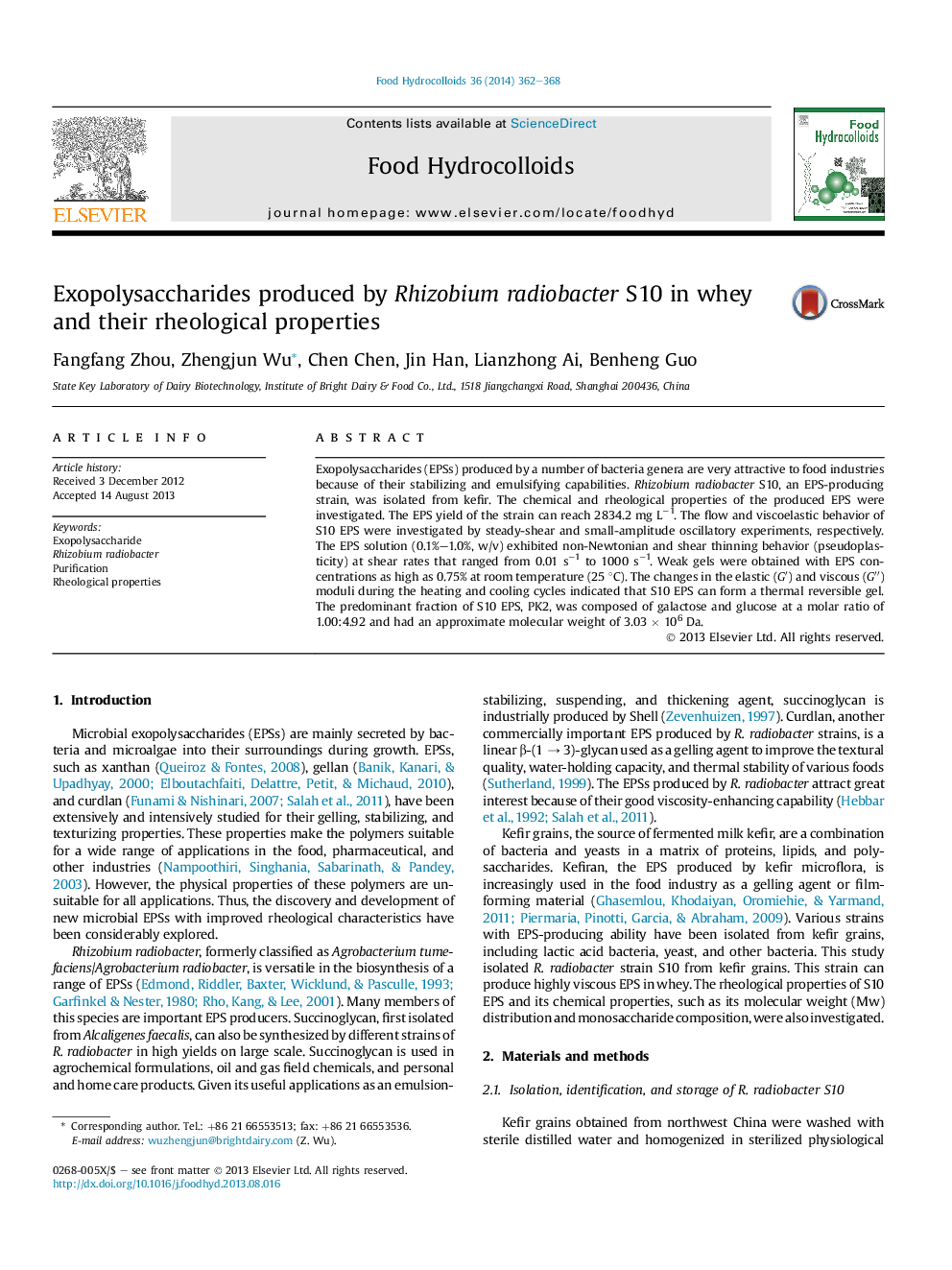| Article ID | Journal | Published Year | Pages | File Type |
|---|---|---|---|---|
| 603919 | Food Hydrocolloids | 2014 | 7 Pages |
•Rhizobium radiobacter S10 with high EPS yielding was isolated and identified.•S10 EPS solution exhibited non-Newtonian and shear thinning behavior.•S10 EPS could form a thermal reversible weak gel.•PK2, the predominant component of S10 EPS, was composed of galactose and glucose (1:4.92).
Exopolysaccharides (EPSs) produced by a number of bacteria genera are very attractive to food industries because of their stabilizing and emulsifying capabilities. Rhizobium radiobacter S10, an EPS-producing strain, was isolated from kefir. The chemical and rheological properties of the produced EPS were investigated. The EPS yield of the strain can reach 2834.2 mg L−1. The flow and viscoelastic behavior of S10 EPS were investigated by steady-shear and small-amplitude oscillatory experiments, respectively. The EPS solution (0.1%–1.0%, w/v) exhibited non-Newtonian and shear thinning behavior (pseudoplasticity) at shear rates that ranged from 0.01 s−1 to 1000 s−1. Weak gels were obtained with EPS concentrations as high as 0.75% at room temperature (25 °C). The changes in the elastic (G′) and viscous (G″) moduli during the heating and cooling cycles indicated that S10 EPS can form a thermal reversible gel. The predominant fraction of S10 EPS, PK2, was composed of galactose and glucose at a molar ratio of 1.00:4.92 and had an approximate molecular weight of 3.03 × 106 Da.
Graphical abstractFigure optionsDownload full-size imageDownload as PowerPoint slide
